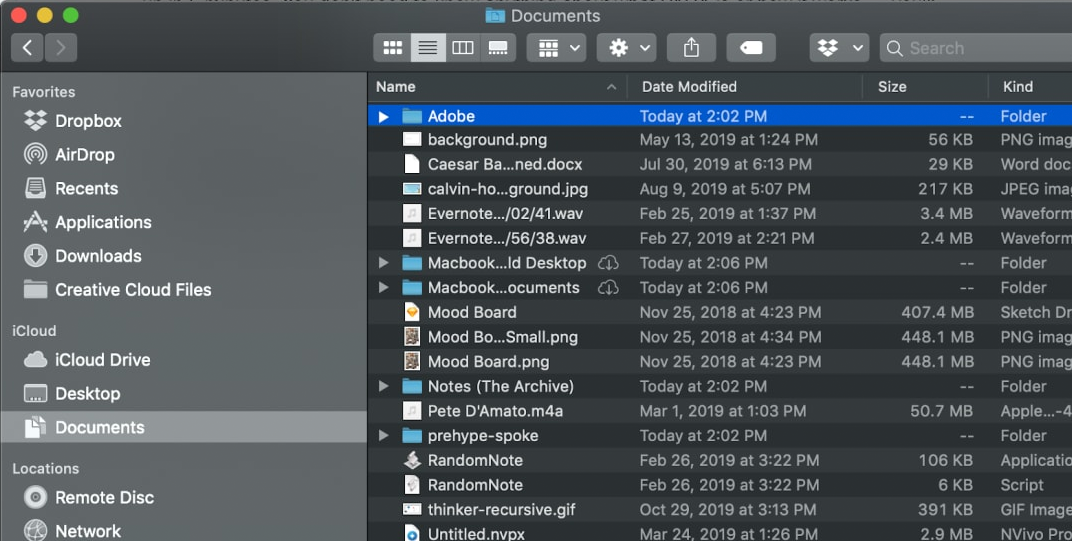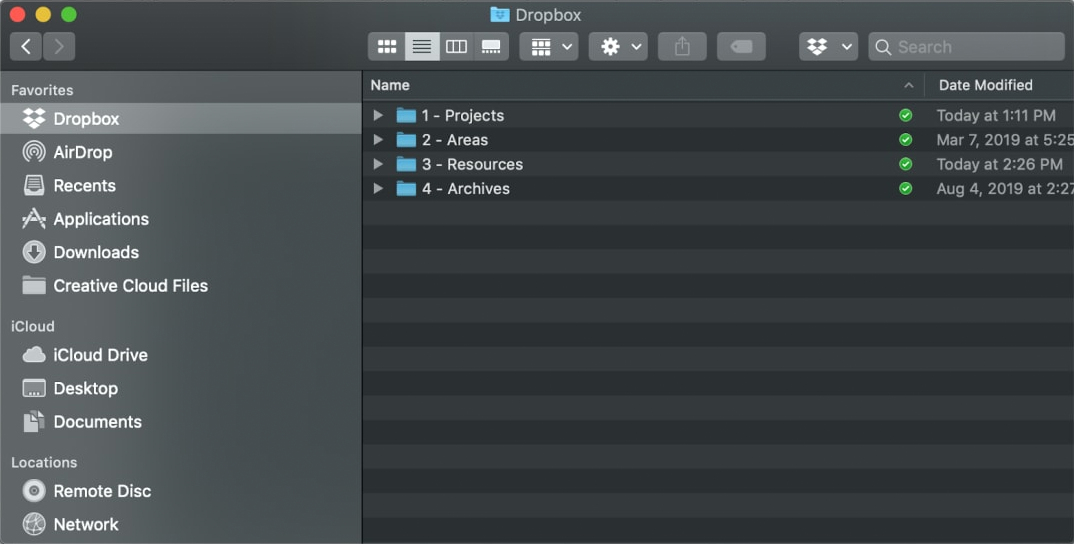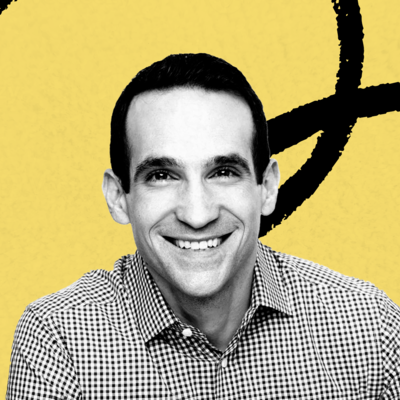
NEW: I built this process into an app that can organize your file system for you automatically. It’s available right now for Premium Members. Check it out here.
Today we’re going to cover cleaning up your file system with Tiago Forte’s PARA. It’s going to change your life, and we’re going to do it in 5 minutes or less.
Why will it change your life you ask? Let me explain.
You see your files Every. Day. And each time you do, seeing the mess is like a little tax on your energy and cognition. Yuck! Using PARA is like hiring a fine English butler to clean the mess, and keep everything squeaky clean.
PARA can seem intimidating, so I’m going to teach you a streamlined variant that I’ve devised that will help you get started super quickly. We’ll call it PARA for Humans.
It’ll help you take your file system from this:
To this:
Let’s dive in!
Make a folder named 1 - Projects
Go into your Google Drive, Documents folder, Evernote, Notion (or whatever file system you want to clean up) and make a new folder. Name it 1 - Projects.
Now, drag any file that sparks joy into the Projects folder. Oh wait — no, sorry wrong organizational system!
Here’s what you do in PARA: instead of files that spark joy, drag any file related to a project that you’re currently working on into the Projects folder.
These files could be anything from a blog post you’re finishing, to your Q4 tax files, to roadmap planning files for Q1 2020.
To be clear, only drag files related to projects you’re currently working on into the Projects folders. Old projects will be dealt with separately.
The files that are in your Project folder will be a reflection of only what’s currently top of mind.
The Only Subscription
You Need to
Stay at the
Edge of AI
The essential toolkit for those shaping the future
"This might be the best value you
can get from an AI subscription."
- Jay S.
Join 100,000+ leaders, builders, and innovators

Email address
Already have an account? Sign in
What is included in a subscription?
Daily insights from AI pioneers + early access to powerful AI tools












Comments
Don't have an account? Sign up!